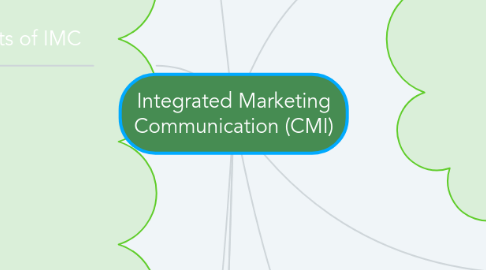Integrated Marketing Communication (CMI)
by mohd arif ashraf mohd rusok


1. Elements of IMC
1.1. 1. Publicity - A form of mass communication used for product promotion through news about a firm's products, actions, policies, awards, etc.
1.2. 2. Advertising - a paid form of non-personal presentaion and promotion of ideas, goods, and services by an identified sponsor. Message can be communicated through media.
1.3. 3. Sales Promotion - A set of marketing activities to boost sales of product or services. Techniques include- after sales service, consumer contests, discounts, exchange offers, free samples.
1.4. 4. Sponsorship - A firm may sponsor sports, cultural, and social events to create a distinct image for itself and its brands. Ex: JDT FC, an MSL team, is sponsored by reputed brands like Johor Corporation and Nike. Similarly, Pahang FC is sponsored by Genting Forest City and Fila.
1.5. 5. Personel Selling - it involves face-to-face communication between a firm's representative and a potential customer. It is the oldest form of promotion. Ex: Perfume brands use the personel selling IMC element in malls to boost sales.
1.6. 6. Public Relations - PR refers to creating and maintaining goodwill of an organization's stakeholders (customers, employeees, investors and supplies) through publicity and non-paid forms of communication.
1.7. 7. Packaging A well- designed package can communicate the product type and quality and influence potential customers. Ex: Fanta uses attractive product packaging.
1.8. 8. Direct Marketing - Involves selling products and services directly to cunsumers. Techniques include direct mail, telemarketing, brochures, and catalogues. Ex: Dominos and Maxis call customers to inform about thier latest offers and schemes.
2. The Communication Process
2.1. It stimulate the reciever's needs and suggests an appropriate method of satisfying
2.2. It gains the reciever's attention
2.3. It achieves understanding by both receiver and sender
3. Pulling and Pushing Promotional Strategies
3.1. Pulling Strategies - Promotional effort by the seller to stimulate final-user demand
3.2. Pushing Strategies - Promotional effort by the seller directed to the members of the marketing channel
4. Definition
4.1. Integrated Marketing Communication (IMC)
4.1.1. A marketing mix element used to inform, persuade and remind people about an organization and/or its products

